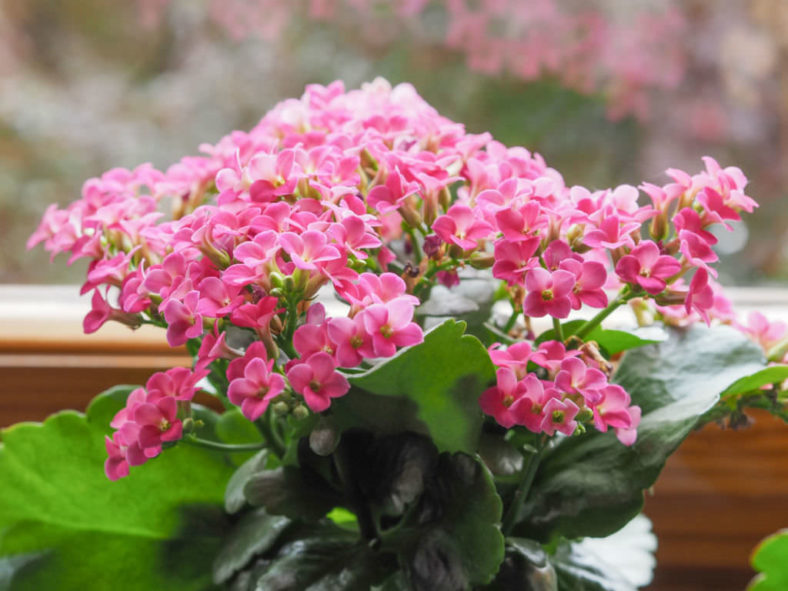Kalanchoe blossfeldiana and its double-flowered cultivars Calandiva, commonly known as Florist Kalanchoe, with their vibrant, long-lasting flowers, are excellent in the garden or as houseplants. These plants require low light conditions to force budding. Ideally, they should experience 14 hours of sunlight to promote budding and bloom. Getting a Florist Kalanchoe to bloom again requires a bit of a rest period for the plant, correct lighting, and some good fertilizer to fuel the process.
Bloom Time
Usually, the plant is in full bloom at purchase and produces a constant parade of flowers for weeks or even months. Florist Kalanchoes are forced to bloom by nurseries to present their flowers to purchasers. In its native region, Kalanchoe blossfeldiana can bloom almost year-round, but it is most commonly blooming as a container houseplant from late winter to late spring. This cycle will slow down as lighting increases.
Getting a Florist Kalanchoe to bloom again requires a rest period for the plant, followed by tricking it into thinking it is a different time of year. Exposure to lower light levels during fall and winter will generally encourage the plant to bloom. Still, plants in higher light regions will need some closet time to mimic the lower light hours of winter hibernation.

A hibernation or rest period is necessary for the plant to amass energy for blooming and growth when favorable conditions are present. Keeping the plant in no light for this period will awaken the Florist Kalanchoe from its winter slumber and cause flower production. Failing to provide a rest period is why getting Kalanchoe to bloom again may be unsuccessful.
Getting a Kalanchoe to Rebloom
After the flowers on your plant fade and die, cut them back and remove the spent blooms. This prevents the plant from diverting energy to sustain a part that is already exhausted.
During the summer, keep the plant in well-drained soil in a sunny location and maintain a moderate moisture level.
When fall arrives, cut back on the water and move the plant indoors if you are in a zone below USDA Plant Hardiness Zone 9 or where frost is expected. The plant will experience low light conditions from fall to late winter, which usually causes flowers to form.
Fertilize with a 0-10-10 in late winter or just as the first buds form. This will promote healthier and more vibrant plants, enhancing their health and vigor.
If you want your plant to bloom at a specific time, such as Christmas, you will need to do some planning. First, minimize watering and give the plant 14 hours without light daily, six weeks before the desired bloom time. Next, place the plant in a closet or under a box for 14 hours and provide 10 hours of bright light.
Keep the plant warm and away from drafts. Do not water or feed the plant for six weeks, as it is dormant. When you see flower buds, move the plant to brighter lighting and resume watering. Feed the plant in spring and remove spent flowers to encourage new buds.
Source: gardeningknowhow.com
Links
- Back to genus Kalanchoe
- Succupedia: Browse succulents by Scientific Name, Common Name, Genus, Family, USDA Hardiness Zone, Origin, or cacti by Genus